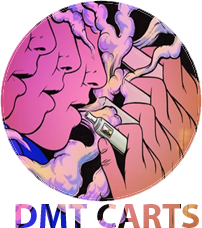From: $ 50 These microdose capsules are a cheaper alternative to our microdose liquid and microdose gummies. Just as easy to dose as the gummies, these capsules are made using our Amazonian Cubensis. We grind the mushrooms into a fine powder before measuring the precise amount required for a microdose.
Microdose Magic Mushroom Capsules. Our Magic Mushroom Microdose Capsules are far and away from our most popular microdose product. We combine dried, ground psilocybin mushrooms with ground reishi mushrooms, which are known to boost the immune system, have anti-cancer properties, fight fatigue and depression, helps with heart health, blood sugar regulation, and serve as an antioxidant.
In the case of microdosing shrooms, this means taking a very small amount of psilocybin, the psychoactive compound found in magic mushrooms. The goal of microdosing is to experience the benefits of the psychedelic substance, without the intense and often overwhelming effects of a full dose.
Gelatin or Vegetarian? There are capsules soluble in the stomach and capsules soluble in the intestines. For mushroom microdosing choose stomach-soluble capsules, as absorption of alkaloids with the stomach is a standard practice for microdosing. Vegetarian or Gelatin capsules is up to you. It doesn’t influence on microdosing effects at all.
Magic Mushroom Microdose Capsules – (Focus/Energy)
Microdose Magic Mushroom Capsules. Our Magic Mushroom Microdose Capsules are far and away from our most popular microdose product. We combine dried, ground psilocybin mushrooms with ground reishi mushrooms, which are known to boost the immune system, have anti-cancer properties, fight fatigue and depression, helps with heart health, blood sugar regulation, and serve as an antioxidant.
Magic Mushroom Store also provides safe and clean options for microdosing. Because all our products are ingested, we make sure to follow properly certified food safe procedures. It is important for us to provide you a product that you can trust and feel safe using. We know that the last thing anyone wants is a bad trip.
Feb 20, 2023Microdosing involves taking very small doses of a psychedelic substance, typically one-tenth to one-fifth of a recreational dose. In the case of microdosing shrooms, this means taking a very small amount of psilocybin, the psychoactive compound found in magic mushrooms.
From anecdotal experience this is accurate, as a medium-strength dose of psilocybin is 2 to 3 grams of dried mushrooms, and a microdose is typically around 0.3 grams.) One obstacle is that the potency of mushrooms can vary greatly, as they are not regulated outside of clinical trials, so this isn’t an exact science.
We are United States experts in magic mushrooms and microdosing mushrooms. Whether you’re experimenting with psychedelic drugs, looking for a great trip or you’re ready to dive deeper in unlocking your mind, you have come to the right place.
We offer a wide variety of Magic Mushroom Products to buy. We offer everything from Dried magic mushrooms, microdose shroom capsules, Magic Mushroom chocolates and magic mushroom gummies. Our most popular Shrooms in USA are the Golden Teachers and Penis Envy. Hope to see you begin your next mushroom journey to Buy Magic Mushrooms in USA!
In general, a microdose of shrooms typically ranges from 0.1 to 0.5 grams of dried mushrooms or mushroom powder. This amount is typically one-tenth to one-fifth of a recreational dose, which is usually around 2-3 grams.

 History of magic mushrooms
History of magic mushrooms Re-emergence of psilocybin mushrooms in Western culture
Re-emergence of psilocybin mushrooms in Western culture


